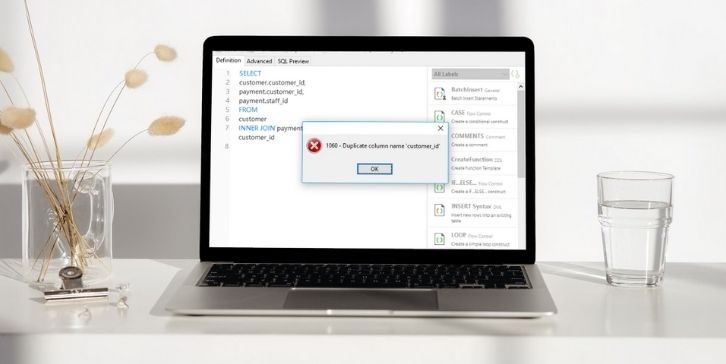When working with Microsoft SQL Server, encountering error codes during development or database maintenance is not uncommon. One such error that occasionally appears is SQL Server Error Code 1060. Understanding what triggers this error and how to effectively resolve it is essential for maintaining efficient and error-free database environments.
What Is SQL Server Error Code 1060?
Error Code 1060 typically occurs when trying to create or modify database objects such as indexes, tables, or columns that already exist or are in conflict with existing definitions. The full error message often reads:
Msg 1060, Level 15, State 1, Line X - The declared name 'XXXX' is already in use.
This means that the SQL Server is unable to process your query because it attempts to declare a name that has already been used elsewhere within the same scope, such as a local variable, alias, temporary table, or trigger.

Common Causes of Error Code 1060
There are several scenarios where this error can emerge. Some of the most common causes include:
- Duplicate Variable Names: Declaring the same variable more than once within a batch or stored procedure.
- Conflicting Temporary Tables: Creating a temporary table that already exists in the session or scope.
- Alias Reuse: Using the same alias for different tables or subqueries in the same SQL statement.
- Reused Parameter Names: Defining stored procedure parameters with names already used inside the procedure for variables or other declarations.
Identifying the exact cause requires reviewing the SQL script and checking for name duplication within the affected scope.
Fixes and Workarounds for SQL Server Error Code 1060
Fortunately, resolving this error doesn’t require major changes or deep interventions. Here are practical solutions:
1. Rename Duplicate Identifiers
Check for duplicated variable or table names and rename the duplicates. It’s best to use unique, descriptive identifiers to reduce conflicts.
-- Problematic
DECLARE @UserID INT;
DECLARE @UserID INT; -- triggers Error 1060
-- Fixed
DECLARE @UserID INT;
DECLARE @UserAge INT;
2. Review Temporary Tables and Drop If Needed
When working with temporary tables (e.g., #TempTable), ensure no previous versions exist in the current session, or drop them before creating a new one.
IF OBJECT_ID('tempdb..#TempTable') IS NOT NULL
DROP TABLE #TempTable;
CREATE TABLE #TempTable (
ID INT,
Name NVARCHAR(50)
);
3. Avoid Alias Conflicts
If using table aliases in complex joins or subqueries, ensure each alias is unique to prevent confusion and conflict within SQL Server’s query parser.
4. Review Stored Procedure Definitions
In stored procedures, ensure parameter names don’t overlap with variable names or aliases used within the procedure logic.

Preventing SQL Server Error Code 1060
Prevention is always better than cure. Here are some best practices to avoid encountering Error 1060:
- Adopt naming conventions for variables, parameters, and tables to reduce the risk of name collisions.
- Modularize code into smaller procedures or scripts to limit the scope of names used.
- Use script blocks and comments to isolate logic and help identify reused names more easily during code review.
Routine code audits and leveraging SQL Server Management Studio’s IntelliSense feature can also assist in avoiding duplication mistakes during development.
FAQ: SQL Server Error Code 1060
-
Q: Does Error 1060 indicate a critical problem with my database?
A: Not necessarily. It typically points to a minor coding mistake within a query or script, such as duplicate declarations. -
Q: Can Error 1060 cause data loss?
A: No. It’s a compile-time error and doesn’t execute any data manipulation commands before failing. -
Q: How can I debug these errors faster?
A: Use an IDE or SQL Server Management Studio with syntax highlighting and structured code to easily spot duplicate names. -
Q: Are there any tools to detect these kinds of errors automatically?
A: Yes. Static code analysis tools and linters for SQL can often detect duplicate declarations and recommend fixes before execution.
By understanding the root causes and sticking to sound development practices, administrators and developers can quickly resolve and avoid SQL Server Error Code 1060 and maintain code clarity and database integrity.




